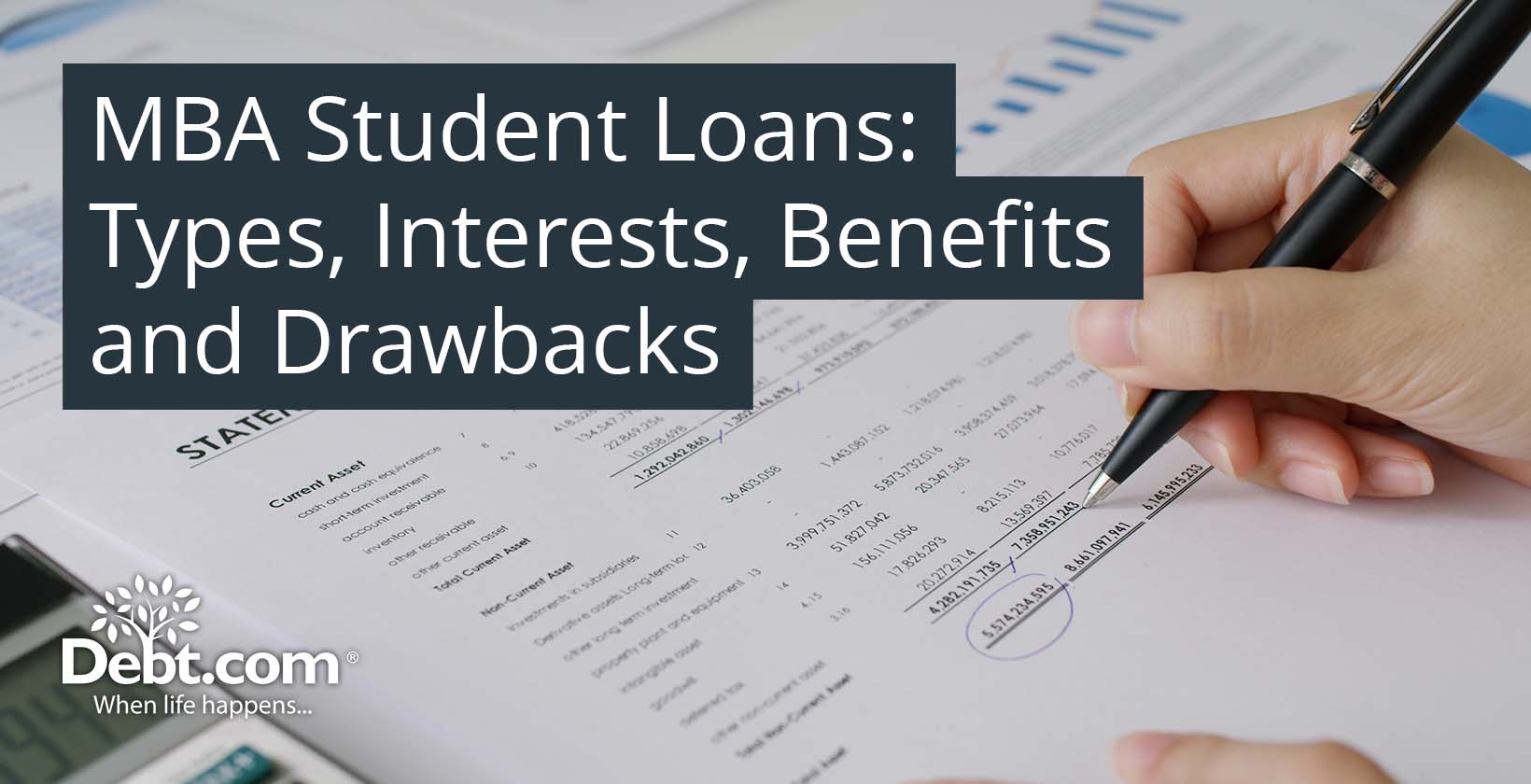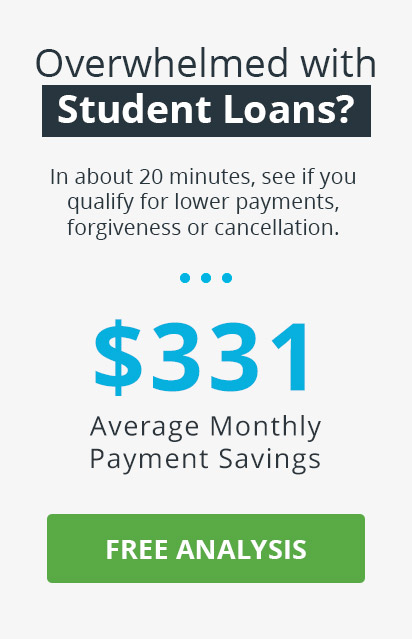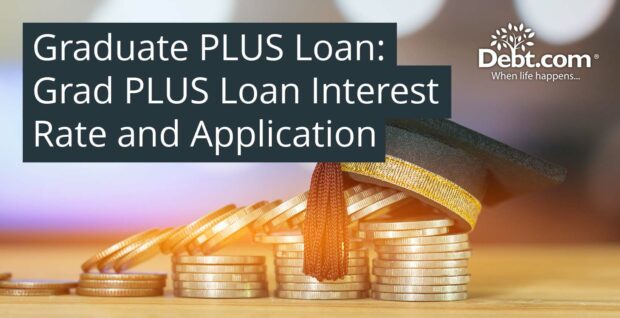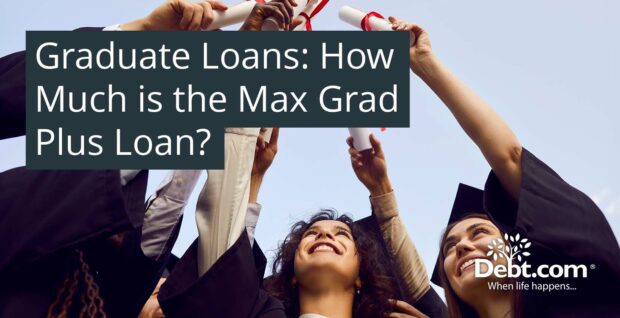
MBA student loans come in various forms, with interest rates, benefits, and drawbacks. The two primary types of MBA loans are federal and private. Federal MBA student loans, such as Direct Unsubsidized Loans and Graduate PLUS Loans, offer fixed interest rates and are known for their borrower-friendly terms, including income-driven repayment plans, deferment, forbearance options, and potential eligibility for loan forgiveness programs like Public Service Loan Forgiveness (PSLF). These features make federal MBA loans particularly advantageous for borrowers needing flexible repayment schedules due to fluctuating income or unforeseen financial difficulties.
Banks, credit unions, and other private lenders offer private MBA loans. These loans cover up to 100% of the cost of attendance and come with either fixed or variable interest rates. Borrowers with strong credit histories or creditworthy cosigners often secure lower interest rates and better terms than federal loans. Private MBA student loans lack the flexible repayment options and borrower protections offered by federal loans, such as income-driven repayment plans and deferment opportunities.
Private loans are not eligible for federal loan forgiveness programs. They pose a greater risk due to their lack of flexibility and support during financial hardships, while private MBA loans benefit borrowers who get to secure favorable terms. The choice between federal and private MBA loans depends on the individual’s financial situation, credit history, and long-term career plans. Research and understand all available options before committing to an MBA loan.
Table of Contents
What are MBA Student Loans?
MBA student loans are financial products designed to help students finance their Master of Business Administration (MBA) education, which is a substantial financial endeavor. These loans are obtainable from federal and private lenders. They cover an MBA program’s tuition, fees, and other related costs, such as books, supplies, and living expenses.
Federal MBA student loans, such as Direct Unsubsidized Loans and Graduate PLUS Loans, offer fixed interest rates, income-driven repayment plans, and options for deferment and forbearance. These loans provide borrowers with more flexible repayment terms and potential loan forgiveness programs like Public Service Loan Forgiveness (PSLF).
Private MBA student loans, provided by banks, credit unions, and other private lenders, cover up to 100% of the cost of attendance and offer variable or fixed interest rates. Getting a student loan from private institutions requires excellent credit or a cosigner, but they offer lower interest rates and better terms for borrowers with excellent credit. Understanding the differences between federal and private MBA loans, including their benefits and drawbacks, is crucial for students to make informed choices about financing their business education and managing their debt effectively after graduation.
What are the Eligibility Requirements for MBA Student Loans?
The eligibility requirements for MBA student loans are listed below.
- Enrollment Status: An applicant must be enrolled at least half-time in an accredited Master of Business Administration (MBA) program.
- Academic Requirements: Admission letter from the educational institution to which a borrower has been admitted to the MBA program. Submission of academic documents, such as mark sheets and certificates, from the 10th grade (high school) to the most recent degree earned. Include scores from entrance exams, including the CAT, XAT, GMAT, MAT, or any other pertinent examinations if applicable.
- Citizenship or Residency: Eligibility for federal loans requires U.S. citizenship, permanent residency, or eligible non-citizen status. Private loans require borrowers to be U.S. citizens or permanent residents, though some private lenders offer loans to international students if they have a U.S. cosigner.
- Financial Need: Some federal loans, such as direct-subsidized loans, require demonstrating financial need. Private loans assess financial need based on income-related documents, including salary slips, income tax returns (ITR), or a certificate of income from the borrower’s parent(s) or guardian(s).
- Credit History: Federal loans, such as Direct Unsubsidized Loans or Graduate PLUS Loans, do not significantly consider credit history in their approval process. Private loans require borrowers to have a good credit history or a creditworthy cosigner if their credit history is insufficient. A better credit score typically results in more favorable loan terms.
- Loan Type: Federal loans, including Direct Unsubsidized Loans and Graduate PLUS Loans, offer standardized terms and rates set by the government. Private loans have varying rates and terms depending on the lender and cover up to 100% of the cost of attendance.
- Previous Loans: Borrowers must not default on existing federal student loans to be eligible for new federal loans. Past loan history is assessed for private loans, and default status impacts eligibility.
- Degree Program: Must be enrolled in an accredited institution to pursue an MBA or a related graduate business degree.
Which Types of Loans are Available for MBA students?
The types of Loans available for MBA students are listed below.
- Federal Direct Unsubsidized Loans: Federal Direct Unsubsidized Loans are available to graduate students regardless of financial need. These loans have a fixed interest rate, determined annually, and offer various repayment plans, including income-driven repayment options. One of the primary benefits is that there is no requirement to demonstrate financial need, and borrowers have access to deferment and forbearance options. These loans come with origination fees, and the borrowing limits do not cover the full cost of attendance.
- Federal Grad PLUS Loans: Federal Grad PLUS Loans are federal loans that graduate students use to cover education expenses not met by other financial aid. These loans require a credit check and have a fixed interest rate determined annually, typically higher than Direct Unsubsidized Loans. Benefits include the ability to cover the full cost of attendance minus other financial aid, flexible repayment plans including income-driven options, and availability of deferment and forbearance. The drawbacks include higher interest rates and origination fees than Direct Unsubsidized Loans and the credit check requirement.
- Private Loan Options: Private student loans, offered by private lenders, cover up to 100% of attendance costs and come with either fixed or variable interest rates. Benefits include the potential for lower interest rates for borrowers with good credit, and flexible borrowing amounts to meet specific financial needs.
- Federal Loan Options: Federal Direct Unsubsidized Loans offer a fixed interest rate and do not require demonstrating financial need, providing various repayment plans, and eligibility for deferment and forbearance. Federal Grad PLUS Loans, with a fixed interest rate, cover education expenses not met by other financial aid and require a credit check, offering flexible repayment plans and the ability to cover the full cost of attendance.
How do Interest Rates for MBA Student Loans Compare?
Federal MBA student loans, including the Federal Direct Unsubsidized Loans and Federal Grad PLUS Loans, have fixed interest rates set annually by the U.S. Department of Education. The Federal Direct Unsubsidized Loans carry a fixed interest rate of 7.05% with a loan origination fee of 1.057%. The Federal Grad PLUS Loans have a fixed interest rate of 8.05% with a loan origination fee of 4.228% for the 2024-2025 academic year.
The fixed rates ensure that the interest rate remains constant throughout the life of the loan, offering borrowers predictability in their monthly payments. These rates, however, are higher than rates for undergraduate federal loans, reflecting the increased risk associated with lending to graduate students. These rates are subject to change each academic year. Students must check the most current rates when applying for loans.
Private MBA student loan interest rates vary widely depending on the lender, the borrower’s creditworthiness, and whether the loan has a fixed or variable interest rate. Fixed interest rates offered by private lenders range from approximately 4.5% to 15.5%, providing stability in monthly payments throughout the life of the loan.
Variable interest rates range from around 5.5% to 16.0%, and these rates fluctuate based on market conditions, which cause changes in monthly payments. The specific rate a borrower receives depends on factors such as credit score, the presence of a cosigner, the loan amount, and the lender’s terms. Borrowers must compare offers from multiple private lenders to secure the most favorable rate for their MBA loans.
What is the Repayment Process for MBA Student Loans?
The repayment process for MBA student loans is listed below.
- Understand the repayment periods. The Standard Repayment Plan for federal and many private student loans has a fixed 10-year term, ensuring full repayment within a decade. The Extended Repayment Plan allows terms of up to 20 or 25 years through federal income-driven repayment plans or private lender refinancing for borrowers requiring monthly payments. The total repayment amount increases due to added interest. Expedited Repayment involves shortening the term to five or seven years via private lender refinancing, raising monthly payments but significantly reducing overall interest, leading to substantial savings.
- Assess the financial situation. Assessing income and expenses involves determining how much of the budget is allocated toward loan payments without compromising essential living expenses and savings. Setting financial goals helps decide whether to prioritize paying off loans quickly to save on interest or prefer lower monthly payments to maintain financial flexibility.
- Pick a Repayment Plan. The Standard Repayment Plan offers predictability with fixed monthly payments over 10 years. Income-Driven Repayment Plans set payments based on a percentage of discretionary income (10%- 20%) and extend the term to 25 years for federal loans. Refinancing lowers the interest rate and allows the borrower to choose a term that aligns with the borrower’s repayment goals, especially if the borrower has strong financial credentials.
- Explore Deferment and Forbearance options. Federal Loan Deferment allows postponement of payments if enrolled at least half-time in school or facing economic hardship, with interest not accruing on subsidized loans during deferment. Forbearance permits temporary reduction or postponement of payments due to financial difficulties, illness, or other qualifying reasons, but interest is going to accrue on all loan types during forbearance.
- Set up payment methods. Enrolling in automatic payments provides an interest rate discount and ensures timely payments. Making regular monthly payments through the lender’s portal or by setting up reminders helps avoid missing due dates and keeps the loan in good standing.
- Monitor loan repayment. Keep detailed records of all payments made, including the date, amount, and loan balance, using online tools or apps provided by the lender. Regularly review statements to ensure payments are applied correctly and stay updated on the loan balance and any changes in terms.
- Adjust the repayment plan if needed. Consider refinancing the loans again for better terms if interest rates drop or their financial situation improves. Switch between repayment plans if the borrower’s financial situation changes for federal loans.
- Pay off early if possible. Apply extra funds directly to the principal to reduce the loan balance faster and save on interest. Utilize bonuses, tax refunds, or other windfalls to make lump-sum payments on the loan.
Are there any Loan Forgiveness Options for MBA Student Loans?
Yes, there are loan forgiveness options available for MBA student loans under specific circumstances. Public Service Loan Forgiveness (PSLF) is one of the main programs that MBA graduates take advantage of if they work in public service roles, such as for government organizations or enrolled non-profit organizations. Borrowers must make 120 qualifying monthly payments under a qualifying repayment plan while working full-time for a qualifying employer to qualify for Public Service Loan Forgiveness. Some business schools and organizations offer specific loan assistance programs that provide partial loan forgiveness to graduates who meet certain criteria, such as working in lower-paying public service roles.
Income-Driven Repayment (IDR) plans offer forgiveness on the remaining balance of federal student loans after 20 or 25 years of qualifying payments, though the forgiveness is considered taxable income. MBA graduates must evaluate these options, as the tax implications and eligibility conditions impact the overall benefit of the forgiveness programs.
What Documents are Required to Apply for MBA Student Loans?
The documents required to apply for MBA Student Loans are listed below.
- Proof of Identity: Identification documents, including a driver’s license, passport, Social Security card, or state-issued ID card, must confirm the borrower’s identity.
- Proof of Address: Utility bills (electricity, water, gas), lease agreements, or bank statements to confirm the borrower’s residence.
- Admission Letter: A copy of the admission letter from the educational institution to which a borrower has been admitted to the MBA program.
- Entrance Exam Scores: Scorecards of entrance exams, such as the Graduate Management Admission Test (GMAT) or Graduate Record Examination (GRE), if applicable.
- Academic Documents: Transcripts and certificates from a borrower’s undergraduate degree to confirm their academic qualifications.
- Photos: Recent passport-sized pictures for identification and documentation.
- Cost of Education: The estimated cost of the MBA program, which includes tuition fees, accommodation charges, books and study material expenses, examination fees, and any other related costs, is detailed below.
- Income Proof: A letter from the employer, recent pay receipts, or tax returns are required to evaluate the borrower’s repayment capacity.
- Loan Application Form: The completed and signed loan application form issued by the lender, which includes important information about the borrower, the educational institution, the loan amount, and other pertinent information.
- Bank Statements: Bank statements detailing account balances and transactions for the last six months to a year are needed to assess the borrower’s ability to repay.
- Additional Documents: The lender thinks other relevant documents are necessary based on its standards and the borrower’s specific scenario, such as collateral documents, guarantor paperwork, co-borrower income verification, and any other documents that apply.
What are the Benefits of Federal versus Private MBA Student Loans?
The benefits of Federal versus Private MBA student loans are listed below.
- Income-Driven Repayment Plans (Federal): Federal loans provide repayment plans contingent upon the borrower’s income, simplifying the process of managing payments as their salary fluctuates. Income-driven repayment programs are among the distinctive benefits.
- Deferment and Forbearance Options (Federal): Borrowers temporarily delay or reduce payments due to financial hardship without defaulting on the loan.
- Loan Forgiveness Eligibility (Federal): Forgiveness programs are available for federal loans, which reduce the total amount that must be repaid.
- Fixed Interest Rates (Federal): Federal loans have fixed interest rates, ensuring that payments remain stable during the loan’s duration. Direct Unsubsidized Loans and Graduate PLUS Loans have set interest rates.
- Accessibility (Federal): Available to US citizens, permanent residents, and qualifying non-citizens enrolled at least half-time in an accredited program. Must meet specific qualifying requirements, such as citizenship and enrollment.
- Coverage of Full Cost (Private): Private loans cover up to 100% of the cost of attendance, which covers expenses that government loans do not.
- Variable Rates and Terms (Private): Borrowers must look around for reasonable rates and periods that best suit their financial condition. Rates and terms differ between lenders; compare choices from several lenders.
- Better Terms with Good Credit (Private): Borrowers with good credit or a strong cosigner get loans with cheaper interest rates and costs. Better credit equals better terms and less chance of additional costs.
- Flexible for International Students (Private): Some private lenders provide alternative credit history requirements, which benefit international students.
- No Federal Requirements (Private): Private loans do not have the same government requirements, which is advantageous for borrowers who do not match the federal eligibility criteria. Private lenders have less regulatory constraints than federal loans.
What are the Potential Drawbacks of Taking out MBA Student Loans?
The potential drawbacks of taking out MBA student loans are listed below.
- Career Restrictions: The pressure to secure high-paying employment immediately after graduation and manage repayment of large MBA loans is stressful. The financial burden likely discourages graduates from pursuing less lucrative but more fulfilling careers, such as nonprofit work or entrepreneurship.
- Increased Debt Burden: Numerous MBA candidates have preexisting debt from undergraduate or other graduate programs. Adding MBA loans results in significant financial and emotional strain and a reduction in financial resources, particularly in the event of unforeseen expenses.
- Lack of Transparency from Lenders: Some lenders are not upfront about loan terms and rates, making it difficult for borrowers to determine the full cost of the loan. Fees and repayment periods vary amongst lenders, considerably altering the total cost.
- Risk for Certain Candidates: MBA loans come with significant risks, particularly for international students who experience visa challenges or changes in government laws, forcing them to return to countries with lower earnings.
- Financial and Emotional Stress: The financial load of substantial MBA loans causes considerable stress and anxiety. It impacts one’s mental health and overall well-being, making it difficult to focus on professional and personal development. Large loans cause anxiety and questions about repayment, which negatively impacts graduates’ mental health.
How can MBA students Manage Their Loan Repayments?
MBA students can manage their loan repayments by following the 13 steps listed below.
- Calculate the total debt. Know the total amount of debt owed. MBA students often take out multiple loans, both federal and private, during their academic years. The knowledge of such is crucial for formulating a comprehensive repayment strategy. Review all loan statements and consolidate the information into one document for easier tracking.
- Understand the loan terms. The interest rates, repayment terms, and conditions of each loan vary. Comprehending these particulars assists in the prioritization of payments and the avoidance of penalties. Make a comprehensive inventory of the terms of each loan, which must include the interest rate, monthly payment, and any special conditions.
- Review the grace periods. Grace periods are contingent upon the specific loan and offer a time before repayments commence. Take advantage of the time to strategize and accumulate funds. Note the grace periods for all loans and indicate the repayment start dates on the calendar.
- Consider loan consideration. The consolidation of multiple loans into a single loan has the potential to facilitate repayment and reduce monthly payments. Interest rates are not always reduced. Assess the advantages and disadvantages of private refinancing options or federal Direct Consolidation Loans.
- Explore repayment plans. Federal loans provide a variety of repayment plans, including income-driven repayment (IDR), extended repayment, and graduated repayment plans, that are customized to accommodate varying financial circumstances. Speak with the loan servicer to determine the most appropriate repayment plan.
- Create a budget. A budget is instrumental in managing income and expenses, guaranteeing that loan repayments are affordable and punctual. Monitor the monthly income and expenditures and designate a specific amount of the borrower’s budget for loan repayments.
- Use the Debt Avalanche Strategy. Pay off the loans with the highest interest rates first to minimize the total interest paid. Make the minimum payment on all loans and allocate surplus funds to the loan with the highest interest rate.
- Pay down the principal. Reducing the principal reduces the interest accrued over time. Make additional payments toward the principal balance whenever feasible.
- Automate payments. Setting up automatic payments prevents delayed payments and qualifies borrowers for interest rate discounts. Visit the loan servicer’s website to enroll in auto-debit for the loans.
- Explore loan forgiveness programs. Loan forgiveness programs apply to certain occupations in the public service or non-profit sectors. Investigate and apply to loan forgiveness programs such as Public Service Loan Forgiveness (PSLF) if eligible.
- Monitor application status. Monitor the status of the loan payments and any applications for consolidation or forgiveness regularly. Utilize the online portals offered by loan servicers to monitor the status of the applications and payments.
- Understand tax implications. Tax implications are likely to result from loan forgiveness and other forms of repayment assistance. Consult with a tax professional to ascertain the potential effects of loan forgiveness on the borrower’s taxes.
- Seek financial planning advice. Expert advice offers customized strategies for debt management and future planning. Consult with a financial advisor specializing in financial planning for graduates and the repayment of student loans.
Can MBA Student Loans Be Consolidated?
Yes, MBA student loans can be consolidated. Graduates have the option to consolidate their loans through a Direct Consolidation Loan from the U.S. Department of Education for federal loans, or by refinancing with a private lender if they have a mix of federal and private loans. Loan consolidation simplifies debt management by joining several loans into one, simplifying tracking and managing payments.
Refinancing through a private lender is likely to reduce the interest rate, leading to saving money over the loan term, while federal loan consolidation for students doesn’t lower the interest rate. The process offers new repayment options, such as extending the loan duration for smaller monthly payments or opting for a fixed interest rate. Consolidating MBA loans leads to excellent financial stability and less stress by simplifying monthly payments and lowering overall loan fees.









